Build Impressions
Once again, I had the opportunity to attend Microsoft's //build// conference in person. 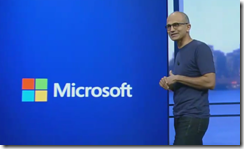 This year did not disappoint. In these days of fast internet and streaming/recorded conference sessions, I still find it beneficial to attend in person, not so much for what is said on stage, but also to see the audience reaction to announcements. In some of the informal gatherings like at lunches or at the airport, I try to make it a habit to ask people what the best thing they saw was to gain a feeling for the atmosphere that was present in rooms that I was not able to attend in person. I also try to pay attention to not only what is said, but also what is conspicuously not said at the conference. In this post, I'll try to share my thoughts from the conference on what was hot and what to keep an eye out for based on the reactions I saw.
This year did not disappoint. In these days of fast internet and streaming/recorded conference sessions, I still find it beneficial to attend in person, not so much for what is said on stage, but also to see the audience reaction to announcements. In some of the informal gatherings like at lunches or at the airport, I try to make it a habit to ask people what the best thing they saw was to gain a feeling for the atmosphere that was present in rooms that I was not able to attend in person. I also try to pay attention to not only what is said, but also what is conspicuously not said at the conference. In this post, I'll try to share my thoughts from the conference on what was hot and what to keep an eye out for based on the reactions I saw.
In the opening keynote, Microsoft announced to of the most important advances: Universal Apps and the Windows Phone 8.1 with the Cortana voice based digital assistant. With Universal Apps, Microsoft is attempting to move closer to a unified programming model across devices and platforms including Desktop, Tablet, Phone, and XBox. Adding in partners like Xamarin and Unity 3D, these universal apps can also extend to Apple and Andriod as well. There is not 100% API parity across the platforms, but these changes promise to get us much closer to the silver bullet of write once-run anywhere that so many customers are looking for. At this point they indicated that there is a 90% API parity between Windows Store Apps and Windows Phone 8.1. While you can use Xamarin, Miguel did indicate that you will still need to write separate UI tiers for the Andriod and iOS platforms reusing the core shared business logic.
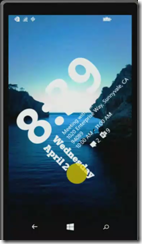 Speaking of platforms, Microsoft took the wraps off of the next major update to Windows Phone. Contrary to some reports, this is a major update both from a developer and end user perspective and generated quite a bit of buzz. The changes include significant lock screen enhancements, a new notification center, and an impressive voice controlled digital assistant called Cortana
Speaking of platforms, Microsoft took the wraps off of the next major update to Windows Phone. Contrary to some reports, this is a major update both from a developer and end user perspective and generated quite a bit of buzz. The changes include significant lock screen enhancements, a new notification center, and an impressive voice controlled digital assistant called Cortana 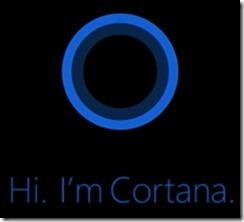 that learns from your use and integrates with your online activities. It's like Siri and Google Now got together and had a prodigy. I didn't get to try it out first hand, so it will be interesting to see how much the demos were scripted or if it really works as well as promised. Integrating it with your apps also appears to be relatively painless so it will be interesting to see how well this takes off. The new UX features on the phone along with a unified WinRT model really make the platform something to contend with and signals the convergence that had long been rumored.
that learns from your use and integrates with your online activities. It's like Siri and Google Now got together and had a prodigy. I didn't get to try it out first hand, so it will be interesting to see how much the demos were scripted or if it really works as well as promised. Integrating it with your apps also appears to be relatively painless so it will be interesting to see how well this takes off. The new UX features on the phone along with a unified WinRT model really make the platform something to contend with and signals the convergence that had long been rumored.
Beyond the advances in UX and platforms, developers were pleasantly surprised by the language teams with some important advances in managed languages including the release of the Roslyn compiler. After a long 5+ year effort, the teams have finally completed the rewrite of the compilers in managed languages adding in extensibility hooks for the community to build extensions to the language services. This also allowed the team to add a number of language features that had long been on the back burner, but they were now finally able to incorporate with a more manageable code base. Perhaps the biggest news item of the conference trending on Twitter and at the top of Hacker news as Anders open sourcing the Roslyn compilers. Hopefully as a result, we'll now see a greater community involvement in extending the languages in much the same way that F# has thrived from their small but enthusiastic community.
In addition to the managed languages teams, the developer division has been hard at work on a number of other things that were debuted at Build to largely positive reactions. Among these, the ones that got the most reaction were the release of Typescript 1.0, SIMD support, and .Net Native compilation for Windows Store Apps.
 Even though this was a Microsoft conference, attendees are still concerned about cross platform solutions and strategies. As a result of massive attendee interest, the Xamarin talk was moved from a regular session room to the main keynote hall. Judging from the number of seats taken up, I would guess that nearly 1/4 of all attendees came to this session. As mentioned earlier, Xamarin offers a cross platform C# solution, but does not guarantee 100% code reuse across platforms. It was good to see Microsoft acknowledging and embracing this solution and it will be interesting to see what happens going forward with Xamarin, particularly now that the C# compilers were open sourced and are already being incorporated into the Xamarin tools.
Even though this was a Microsoft conference, attendees are still concerned about cross platform solutions and strategies. As a result of massive attendee interest, the Xamarin talk was moved from a regular session room to the main keynote hall. Judging from the number of seats taken up, I would guess that nearly 1/4 of all attendees came to this session. As mentioned earlier, Xamarin offers a cross platform C# solution, but does not guarantee 100% code reuse across platforms. It was good to see Microsoft acknowledging and embracing this solution and it will be interesting to see what happens going forward with Xamarin, particularly now that the C# compilers were open sourced and are already being incorporated into the Xamarin tools.
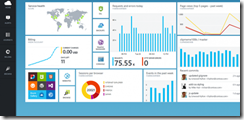 Not everything at the conference was focused on the clients. Azure and ASP.Net also got a fair amount of love as well. A couple of the more buzz worthy items here were the Azure management portal enhancements, greater integration between Visual Studio and Azure IAAS (Including remote debugging in cloud VM's), JAVA web sites (I don't see Google putting .Net in their cloud, so who's more open now?).
Not everything at the conference was focused on the clients. Azure and ASP.Net also got a fair amount of love as well. A couple of the more buzz worthy items here were the Azure management portal enhancements, greater integration between Visual Studio and Azure IAAS (Including remote debugging in cloud VM's), JAVA web sites (I don't see Google putting .Net in their cloud, so who's more open now?).
For ASP.Net, there were plenty of ooh's and ahs for browser link and being able to push updates to markup and styles directly from the browser back to Visual Studio. The IE11 F12 developer tools also now support map files (to debug typescript/coffee script/minified JavaScript) and marking files as library files to eliminate debugging into core frameworks (Angular/JQuery/etc) allowing you to focus on the custom application code to improve developer productivity.
I was surprised to see one technology that is still a Microsoft Research project getting so much attention in the sessions. The Orleans project for massive cloud based parallel computing was discussed in several of the sessions I attended, including one describing how it is being used in production for managing Halo game status and stats even tracking all 500,000 games that were ever played on the platform.
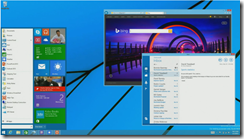 This year's Windows announcements were somewhat dwarfed by some of the others mentioned previously. Many of these enhancements are directed at improving the experience and feature discoverability for mouse/keyboard users. Perhaps the one that made the news the most was a prototype image of a possible Win v.Next start menu. I hope people aren't disappointed when they install Windows 8.1 Update and don't see this new menu because some news sites missed the fact that this is not yet officially in the product, though given the enthusiastic response it got, I wouldn't be surprised to see it appear down the road.
This year's Windows announcements were somewhat dwarfed by some of the others mentioned previously. Many of these enhancements are directed at improving the experience and feature discoverability for mouse/keyboard users. Perhaps the one that made the news the most was a prototype image of a possible Win v.Next start menu. I hope people aren't disappointed when they install Windows 8.1 Update and don't see this new menu because some news sites missed the fact that this is not yet officially in the product, though given the enthusiastic response it got, I wouldn't be surprised to see it appear down the road.
Perhaps more important from an enterprise perspective is the changed licensing and side loading costs for Windows. Dropping the price of Windows and Windows Phone to free for devices under 9 inches should greatly increase the number of OEM's that have preferred the free Android platform. Also the challenges and expense with procuring side loading licenses are now dramatically reduced due to policy changes coming with that distribution model. Additionally, new Brokered apps can access the full power of windows from “Store Apps” for enterprise purposes. Rocky Lhotka has a good summary of the pricing and side loading changes and the impact that they will have for enterprise deployments.
The conference isn't all fun and games. There's also sound. Being a formally trained musician, I was interested to attend a session on incorporating Midi, sequencers, and synthesis. In that session they announced a new MIDI API for WinRT to enable more music interactivity using Windows Store Apps which I need to try playing with in my free time.
Not to be accused of seeing everything through rose colored GLASSes, there were a few notable omissions at the conference. While there were some sessions regarding the "Internet of things" these sessions largely focused on abstract use of Azure in the cloud to manage a a wide array of connected devices. With Google, Sony, Facebook, Pebble, and many others currently pushing forward with an array of devices, I found it surprising that Microsoft didn't make any announcements of new devices at the conference. For a company that's trying to be a device and services company, not having a new device to announce was noticeable. I admit that the delay of the Nokia mobility acquisition and Facebook's recent purchase of Oculus may have put a wrench in the ointment, so there may be things in the works that were just not quite ready to release at this time.
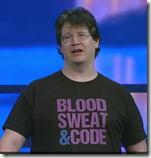 With this being the first major public conference since the One Microsoft reorg, and management shuffles, I was particularly interested in getting a feel for the kinds of change Microsoft was making. In general, I found they portrayed a much younger hipper vibe and returning to a more publically open style, unlike the walled garden that was present in the Windows division with the former leadership.
With this being the first major public conference since the One Microsoft reorg, and management shuffles, I was particularly interested in getting a feel for the kinds of change Microsoft was making. In general, I found they portrayed a much younger hipper vibe and returning to a more publically open style, unlike the walled garden that was present in the Windows division with the former leadership.
Who would have thought that Microsoft would be publishing libraries written by Twitter (Bootstrap), and Linus Torvalds (Git), and having people on the keynote stage wearing 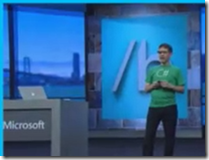 Google Glass and using a MacBook Pro. They continue to more fully embrace a more collaborative open source model with not only Roslyn being open sourced, but many of the core .Net components as well. (link to .Net open site). If there was one overarching theme from this year, it seemed to be a re-Embracing of .Net and the developer community. I like the direction that Satya Nadella appears to be heading and hope that it continues this way.
Google Glass and using a MacBook Pro. They continue to more fully embrace a more collaborative open source model with not only Roslyn being open sourced, but many of the core .Net components as well. (link to .Net open site). If there was one overarching theme from this year, it seemed to be a re-Embracing of .Net and the developer community. I like the direction that Satya Nadella appears to be heading and hope that it continues this way.
